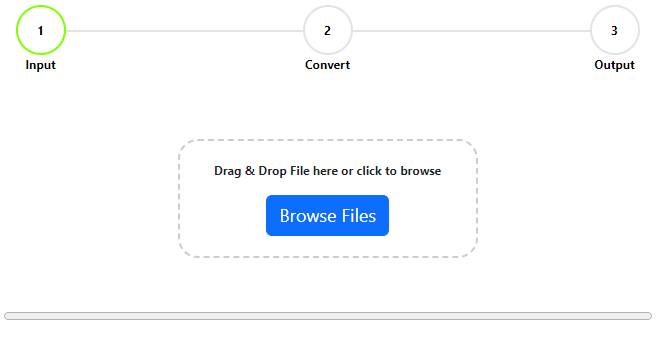The difference between gdal_translate and gdalwarp
The gdal_translate and gdalwarp commands are both part of the GDAL suite but serve different purposes and functionalities … but there is some overlap!
If you are working with Geospatial data, check out our podcast!
Here’s a comparison based on the GDAL documentation:
gdal_translate
- Primary Function: Converts raster data between different formats.
- Basic Usage:
gdal_translate [options] input_file output_file- Common Options:
-ofspecifies the output format.-cofor creation options specific to the output format.-otto set the output band type.-projwinto select a subwindow from the source image.- Usage Scenarios:
- Converting from one raster format to another (e.g., NetCDF to GeoTIFF).
- Extracting a subwindow of the raster.
- Changing the data type or compression of the raster.
- Examples:
gdal_translate -of GTiff input.nc output.tif
gdal_translate -projwin 10 20 30 40 input.tif output.tifgdalwarp
- Primary Function: Image reprojection and warping.
- Basic Usage:
gdalwarp [options] input_file output_file- Common Options:
-t_srsto set the target spatial reference system.-s_srsto set the source spatial reference system.-trto set the output file resolution.-cutlineto clip the output image based on a vector file.-rto specify the resampling method (nearest, bilinear, cubic, etc.).- Usage Scenarios:
- Reprojecting a raster from one coordinate system to another.
- Warping images to a new spatial resolution or alignment.
- Applying spatial transformations including clipping and masking.
- Examples:
gdalwarp -t_srs EPSG:4326 input.tif output.tif
gdalwarp -cutline mask.shp -crop_to_cutline input.tif output.tifHere is a table summarizing the differences between gdal_translate and gdalwarp:
| Feature/Aspect | gdal_translate | gdalwarp |
|---|---|---|
| Primary Function | Format conversion and basic raster manipulations | Image reprojection and warping |
| Basic Command Syntax | gdal_translate [options] input_file output_file | gdalwarp [options] input_file output_file |
| Format Conversion | Yes | Yes, but not the primary focus |
| Reprojection | Limited (mostly via options) | Primary function |
| Resampling Methods | Basic resizing using -outsize | Nearest, Bilinear, Cubic, Cubicspline, Lanczos, Average, Mode |
| Clipping | Extract subwindow using -projwin | Clip using shapefile with -cutline and -crop_to_cutline |
| Change Resolution | Yes, using -outsize | Yes, using -tr |
| Change Data Type | Yes, using -ot | Not typically used for this purpose |
| Apply Compression | Yes, using -co COMPRESS= option | Yes, using -co COMPRESS= option |
| Handling No-data Values | Yes, using -a_nodata | Yes, using -dstnodata |
| Mosaicking | No | Yes |
| Subsetting | Yes, using -projwin | No |
| Main Use Cases | Format conversion, data type change, compression | Reprojection, resampling, clipping, mosaicking |
Examples:
gdal_translate:
- Convert NetCDF to GeoTIFF:
gdal_translate -of GTiff input.nc output.tif- Extract a subwindow:
gdal_translate -projwin ulx uly lrx lry input.tif output.tif- Change data type:
gdal_translate -ot Int16 input.tif output.tif- Apply compression:
gdal_translate -of GTiff -co COMPRESS=LZW input.tif output.tifgdalwarp:
- Reproject to a different coordinate system:
gdalwarp -t_srs EPSG:4326 input.tif output.tif- Clip using a shapefile:
gdalwarp -cutline mask.shp -crop_to_cutline input.tif output.tif- Change resolution:
gdalwarp -tr 10 10 input.tif output.tif- Handle no-data values:
gdalwarp -dstnodata -9999 input.tif output.tif- Mosaic multiple files:
gdalwarp input1.tif input2.tif output.tifThis table and examples should provide a clear comparison between gdal_translate and gdalwarp, highlighting their respective strengths and typical use cases.
Frequently Aksed Questions About gdal_translate and gdalwarp
gdal_translate FAQs
1. How do I convert a NetCDF file to a GeoTIFF?
To convert a NetCDF file to a GeoTIFF using gdal_translate, you can use the following command:
gdal_translate -of GTiff input.nc output.tifIf your NetCDF file contains multiple subdatasets, identify the subdataset you want to convert by using gdalinfo to list them:
gdalinfo input.ncThen, specify the subdataset in the gdal_translate command:
gdal_translate -of GTiff NETCDF:"input.nc":variable output.tif2. How can I specify the output file format?
You can specify the output file format using the -of option. For example, to convert an input file to a GeoTIFF, use:
gdal_translate -of GTiff input_file output_fileReplace GTiff with the desired format code for other formats (e.g., HFA for Erdas Imagine .img files).
3. How do I extract a specific subwindow from a raster file?
To extract a specific subwindow from a raster file, use the -projwin option followed by the coordinates of the desired window:
gdal_translate -projwin ulx uly lrx lry input_file output_fileWhere ulx and uly are the upper left x and y coordinates, and lrx and lry are the lower right x and y coordinates.
4. How can I change the data type (e.g., from float32 to int16) of the output file?
To change the data type of the output file, use the -ot option followed by the desired data type:
gdal_translate -ot Int16 input_file output_fileSupported data types include Byte, UInt16, Int16, UInt32, Int32, Float32, Float64, CInt16, CInt32, CFloat32, and CFloat64.
5. How do I apply compression to the output GeoTIFF file?
To apply compression to the output GeoTIFF file, use the -co option with the COMPRESS creation option:
gdal_translate -of GTiff -co COMPRESS=LZW input_file output_fileOther compression methods include DEFLATE, PACKBITS, and JPEG.
6. Can I use gdal_translate to resize a raster image?
Yes, you can resize a raster image using the -outsize option. Specify the new size in pixels or as a percentage:
gdal_translate -outsize width height input_file output_fileOr, to resize based on a percentage of the original size:
gdal_translate -outsize percentage% percentage% input_file output_file7. How do I handle no-data values in the conversion process?
To handle no-data values, use the -a_nodata option to set the no-data value for the output file:
gdal_translate -a_nodata value input_file output_fileIf the input file has an existing no-data value that you want to preserve, use the -a_nodata option without specifying a value to copy the no-data value from the input file:
gdal_translate -a_nodata input_file output_fileAlternatively, use the -a_nodata option with the specific value you want to set for the output file.
gdalwarp FAQs
1. How do I reproject a raster file to a different coordinate system?
To reproject a raster file to a different coordinate system using gdalwarp, use the -t_srs option to specify the target spatial reference system:
gdalwarp -t_srs EPSG:4326 input_file.tif output_file.tifHere, EPSG:4326 is the EPSG code for the WGS84 coordinate system. Replace it with the EPSG code of your desired coordinate system.
2. What resampling methods are available in gdalwarp and when should I use each?
gdalwarp offers several resampling methods, specified with the -r option:
near: Nearest neighbor resampling. Fast and appropriate for categorical data (e.g., land cover).bilinear: Bilinear interpolation. Suitable for continuous data and produces smoother results.cubic: Cubic convolution. Provides smoother results than bilinear but is more computationally intensive.cubicspline: Cubic spline interpolation. Even smoother results than cubic convolution, with a higher computational cost.lanczos: Lanczos windowed sinc resampling. High-quality resampling for continuous data, with a high computational cost.average: Computes the average of all non-NODATA contributing pixels. Useful for downsampling.mode: Selects the value that appears most frequently among the sampled points. Good for categorical data.
Example:
gdalwarp -r bilinear -t_srs EPSG:4326 input_file.tif output_file.tif3. How can I clip a raster file using a shapefile?
To clip a raster file using a shapefile, use the -cutline option followed by the path to the shapefile:
gdalwarp -cutline mask.shp -crop_to_cutline input_file.tif output_file.tifThe -crop_to_cutline option ensures that the output file is cropped to the bounding box of the cutline.
4. How do I change the resolution of a raster file?
To change the resolution of a raster file, use the -tr option followed by the desired pixel size in the x and y directions:
gdalwarp -tr x_res y_res input_file.tif output_file.tifFor example, to set the resolution to 10×10 meters:
gdalwarp -tr 10 10 input_file.tif output_file.tif5. What is the difference between source and target spatial reference systems (-s_srs and -t_srs)?
-s_srs: Specifies the source spatial reference system. Use this if the input file does not have spatial reference information or if you want to override it.-t_srs: Specifies the target spatial reference system. This is the coordinate system to which the input raster will be reprojected.
Example:
gdalwarp -s_srs EPSG:32633 -t_srs EPSG:4326 input_file.tif output_file.tifHere, the input file is assumed to be in EPSG:32633 (UTM zone 33N) and will be reprojected to EPSG:4326 (WGS84).
6. How do I handle no-data values during the reprojection process?
To handle no-data values during the reprojection process, use the -dstnodata option to specify the no-data value for the output file:
gdalwarp -dstnodata value input_file.tif output_file.tifIf the input file already has a no-data value that you want to propagate to the output, gdalwarp will do this automatically. However, you can specify a different no-data value for the output if needed.
Example:
gdalwarp -dstnodata -9999 input_file.tif output_file.tif7. Can I use gdalwarp to mosaic multiple raster files into one?
Yes, you can use gdalwarp to mosaic multiple raster files into one. Simply list the input files and specify the output file:
gdalwarp input_file1.tif input_file2.tif output_file.tifThis will merge the input files into a single output file, reprojecting if necessary.
Example with reprojection:
gdalwarp -t_srs EPSG:4326 input_file1.tif input_file2.tif output_file.tifThese detailed answers should help you understand and utilize the capabilities of gdalwarp effectively for various raster processing tasks.





